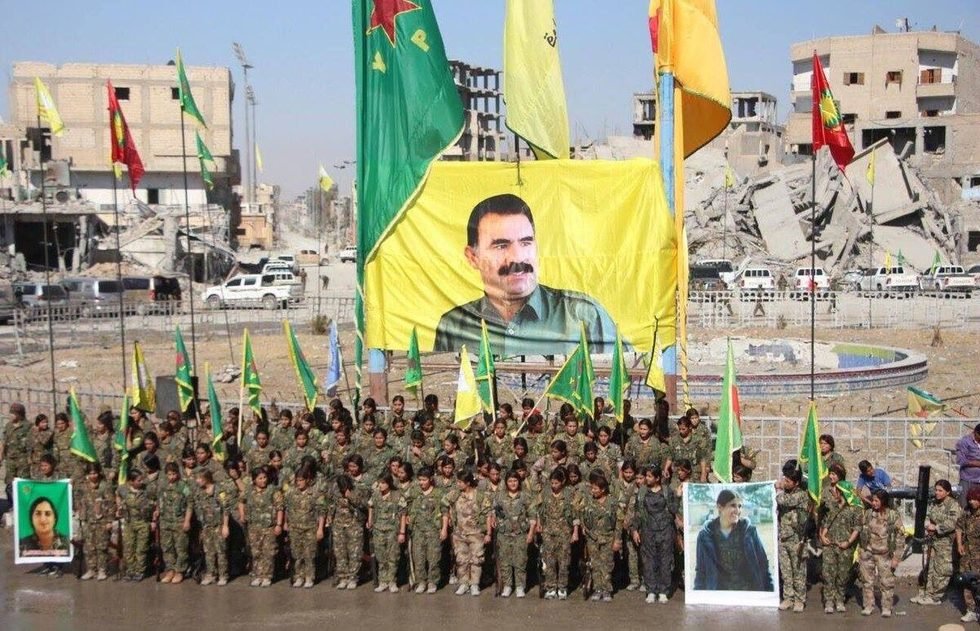Parallel Deadlines: SDF Integration and PKK Peace Process Both Set for Year-End

In a recent interview, Syrian President Ahmad al-Sharaa stated that the timeline for SDF integration into the Syrian army was set for the year’s end, with other actors, namely Turkey, involved in the process. At the same time, the Speaker of the Turkish Parliament has confirmed that the mandate of the parliamentary commission overseeing legal reforms tied to the PKK peace process will also conclude by year’s end. The parallel timing underscores how closely the two tracks are interlinked.
Context: The SDF and the PKK are deeply connected. The SDF’s core component, the YPG, is widely regarded as the PKK’s Syrian affiliate. Turkey has long maintained that the two organizations are essentially the same, while the SDF acknowledges an ideological affinity but denies formal organizational ties.
Analysis: Since the PKK peace process in Turkey became publicly known in October 2024, a central question has been where the SDF sits in this deal. If the Syrian component were to be excluded, the PKK question might have been resolved as early as 2015, because at that time, the rise of the YPG was seen as a key reason for the collapse of peace talks between the Turkish state and the PKK.
The process was publicized in October 2024 but likely started earlier in secret negotiations with Abdullah Öcalan, the jailed PKK leader. Even taking the October date as the start, it came two months before the toppling of the Assad regime. Strategically, it remains unclear whether Turkey tried to separate the PKK file from the SDF, as regional changes following October 7, 2023, necessitated Turkey tightening its home front to take full advantage of the seismic regional shifts.
However, al-Sharaa’s recent interview, in which he mentioned a backdoor deal with Russia that led to Assad’s dramatic and rapid collapse, might suggest that plans for toppling Assad were in motion before December. Any deal between al-Sharaa and Russia at the time would have been highly likely to have been conducted through Turkey. This indicates a strong connection between the PKK peace process and the sudden changes in Syria.
PKK peace process and Middle East Power Shift Timeline
The deadliest attack in Israeli history, which initiated a cascade of dramatic regional changes and power shifts.
Virtually all first-tier Hezbollah leaders, including Hassan Nasrallah, were eliminated, marking a dramatic shift in Lebanese power dynamics.
Following the decapitation of Hezbollah and other key assets, the Iranian proxy network was severely weakened across the region, creating a significant power vacuum.
Turkish ultra-nationalist leader Devlet Bahçeli made an unprecedented outreach to the Kurdish-led DEM Party, signaling a potential shift in Turkish domestic and regional policy.
Donald Trump's victory in the U.S. presidential election influenced regional calculations, with many actors anticipating a shift towards a more transactional "grand bargain" approach.
The sudden collapse was reportedly preceded by a backdoor deal with Russia, likely brokered through Turkey, and followed by Russia's recognition of the new al-Sharaa leadership as part of a broader regional realignment.
From prison, Abdullah Öcalan calls for the PKK to end its armed struggle, a pivotal moment in the Turkish-Kurdish conflict.
SDF commander Mazloum Abdi and Syrian leader Ahmad Al-Sharaa sign a landmark agreement to integrate the SDF into the Syrian Army. The deal was brokered by the U.S., signaling strong American pressure.
Following Öcalan's call, the PKK holds an extraordinary congress and formally approves the decision to lay down arms.
A short but intense conflict erupts between Iran and Israel, further escalating regional tensions.
A largely symbolic ceremony sees the first PKK fighters hand over weapons. The broader disarmament process remains fragile, with reports of the PKK expanding their positions.
Clashes break out in the Sweida province of Syria, indicating new internal conflicts and power struggles in the post-Assad era.
The Turkish parliament sets up a cross-party commission to oversee the PKK's disarmament process, solidifying the peace initiative.
Parallel timelines for SDF integration into the Syrian Army and Turkey's PKK-related legal reforms converge, highlighting the interconnectedness and vulnerability of the peace tracks.
Coincidentally, the March agreement between SDF commander Mazloum Abdi and Syrian President Ahmad al-Sharaa, which stipulates SDF integration into the Syrian army, happened just three weeks after Öcalan’s public call for the PKK to lay down arms. The March agreement was brokered by the US and occurred even after the coastal events in which hundreds of Alawites were reportedly killed, pushing al-Sharaa into a weak position. The fact that Abdi still signed the deal signals strong US pressure, as he was transported to sign the agreement by US helicopter.
Now that the timeline set for SDF integration is the end of 2025, and the Turkish parliamentary committee working on legal reforms related to PKK disarmament operates on the same schedule, this provides stronger evidence that the two processes are interconnected and designed to move in parallel, making the entire process highly vulnerable.
Despite the PKK’s congress committing to laying down arms and a symbolic ceremony in which a dozen fighters burned their weapons, the PKK practically remains in their hideouts in the Kurdistan Region. There are even reports that they have been expanding their tunnel networks rather than vacating them, as the process remains fragile.
This doesn’t mean the process won’t succeed, but it highlights how complex and interconnected these processes are, making success far from guaranteed. Since the processes appear to move on parallel timelines, what happens to the peace process inside Turkey if the SDF integration push collapses or if Turkey moves ahead with backing a military solution? Or if the PKK deliberately moves slowly to give the SDF leverage and ensure it plays its cards right to force concessions on the Syrian front?
Regardless, the synchronized timelines signal the interconnected nature of the PKK and SDF processes. It’s worth observing what would happen if things don’t progress on the Syrian front by year’s end, will the process in Turkey still move ahead?









